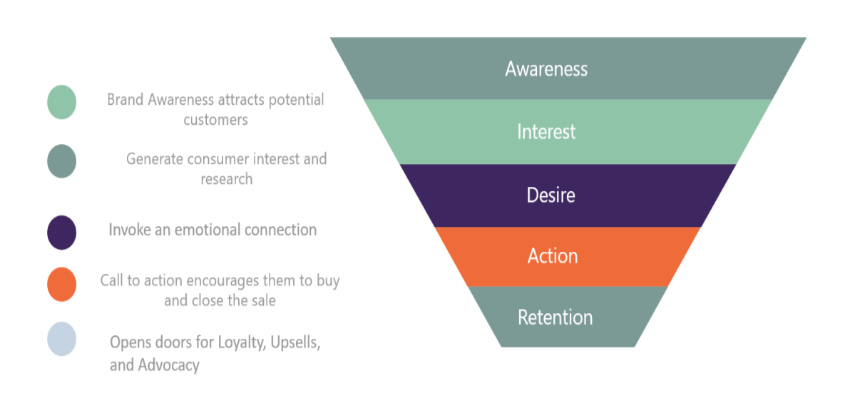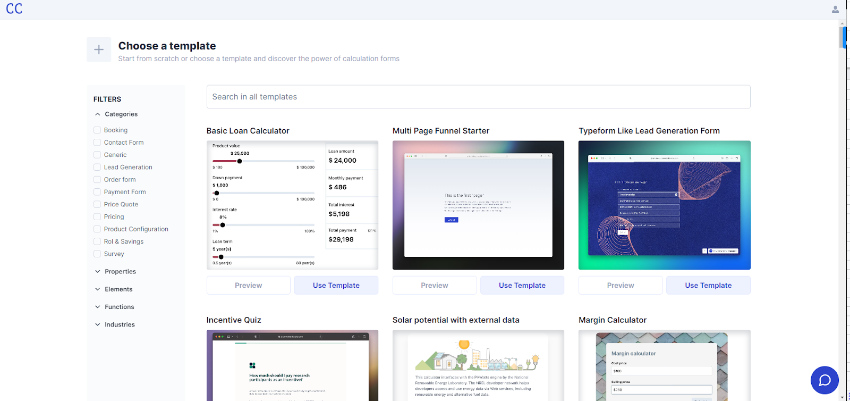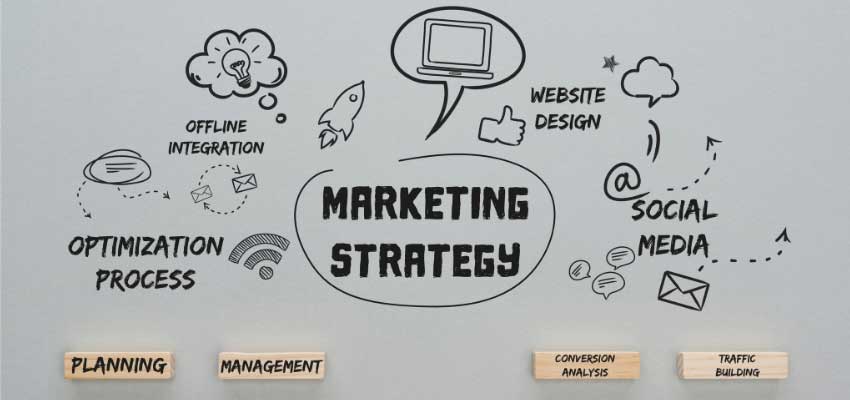Show:
Why The Sales Funnel Is Important For Digital Entrepreneurs
Digital entrepreneurs rely heavily on the Sales Funnel to increase profitability. The Sales Funnel is an effective way for digital entrepreneurs to identify, target, and convert prospects into customers while improving their overall revenue.

Defining The Sales Funnel
The Sales Funnel is a concept that marketers have used for decades to understand and optimize the customer journey. It helps identify which steps in the process need improvement and highlight opportunities for growth.
By defining how potential customers move from awareness of a product or service through purchase and post-purchase engagement, digital entrepreneurs can better measure success and pinpoint areas where they may be losing out on sales. The typical stages of a sales funnel include:
- Awareness
- Interest
- Desire
- Action
- Retention/Loyalty
- Advocacy
At each stage, it is essential to gain insight into what motivates buyers and their preferences when making decisions. For example, at the Awareness stage, you should focus on understanding your target audience and creating content that resonates with them.
In the Interest stage, you should determine what kind of messaging will spark interest among your target demographic so they will move further down the funnel toward conversion.
Finally, during Retention/Loyalty, review any touchpoints along the customer journey that could increase loyalty among existing customers and boost referrals to new ones.
Benefits Of Using A Sales Funnel
The Sales Funnel is an essential tool for digital entrepreneurs. It provides a structured process to track prospective customers and guide them through the buying journey. Understanding how it works can help businesses create effective marketing campaigns, increase conversions, and boost revenue.
The benefits of using a sales funnel include identifying potential buyers more efficiently and reaching them with relevant messages at each stage of their purchase journey. Additionally, having the ability to nurture leads helps build relationships with potential customers which can lead to higher conversion rates.
Utilizing this method allows companies to tailor content specifically to customer interests while ensuring that they are getting maximum value from their marketing efforts.
By tracking data points such as website visits, page views, purchases, and interactions on social media platforms, digital entrepreneurs gain valuable insight into customer behavior that helps refine their strategies over time for increased success.
Creating An Effective Sales Funnel
Creating an effective sales funnel is essential for any small business that wants to maximize its sales and profits. It can take time to design and implement a successful sales funnel. Still, several resources available to help are easy to use and require no coding experience. One of the most practical ways is to use a free sales funnel builder online.

These tools enable you to create a customized funnel that takes customers from awareness to purchase in a simple, step-by-step process. They also provide features such as analytics and reporting so that you can measure the success of your funnel and make necessary adjustments for maximum effectiveness.
Sales Funnel Use Cases For Your Online Business
1. Generate Leads: Use the sales funnel template to identify potential leads and capture their contact information in the funnel.
2. Qualify Leads: Use the template to segment qualified leads from unqualified leads by evaluating their business needs and determining if they are likely to purchase.
3. Convert Leads: Use the template to convert leads into customers by providing personalized content and offers tailored to their needs.
4. Close Deals: Use the template to track the progress of deals in the funnel and coordinate sales activities to close deals quickly and efficiently.
5. Retain Customers: Use the template to create ongoing customer relationships by engaging them with relevant content, promotions, and offers.
Understanding The Customer Journey
A Sales Funnel teaches you more about your customers through the stages mentioned earlier in this article (AIDA). Each step gives you a firsthand account of the lead’s pain points and how to convert them into customers.
For example, when potential customers end up on your online website, they are merely prospects. Once they realize that you can provide a service they need and sign up for an offer, they turn into a lead.
If one successfully convinces them, this gives them agency and can turn into a customer. It is then a business owner’s job to keep them happy and to come back, which in turn converts them into loyal customers.
Finally, if a business does a great job keeping them happy, they will spread the word to other potential customers.
Developing A Marketing Strategy
Knowing customer preferences, behaviors, interests, and other attributes will help guide your decision-making when developing an action plan. With this information in hand, here are four critical steps toward creating a comprehensive marketing plan:
1) Research & Analyze Your Audience – Identifying detailed characteristics of existing and potential customers helps you establish more meaningful connections through targeted messaging.
2) Establish Goals & Objectives – Set realistic goals based on data gathered from research, such as website visits or revenue generated during a given period. This provides insight into what works best for specific customer segments so updates may be made accordingly.
3) Develop Tactics & Strategies – Utilize different methods like email campaigns, social media posts, or content creation to attract new clients while engaging current ones. Adjust tactics based on customer feedback and analyze performance regularly to ensure progress is being made toward achieving goals set forth initially.
4) Track Results & Optimize Performance – Monitor results closely to identify areas where improvements can be made over time regarding conversions rates, ROI, click-through rate, etc. Look at both quantitative (metrics-related KPIs )and qualitative (customer comments/reviews, etc…) data points when assessing overall progress against objectives that were previously outlined.

Generating Awareness Among Target Audience
Generating awareness among a target audience is essential in any marketing strategy, and it involves creating visibility for the product or service being sold and building relationships with potential customers. To reach the desired level of brand awareness, digital entrepreneurs must understand who their target market is and how best to communicate with them.
This includes researching what media types are most effective for reaching this demographic – such as through social media channels, online advertisements, or influencers – and understanding which messages will be compelling and relevant to that particular group.
Once they have identified these essential elements, entrepreneurs should create content that speaks directly to their intended audience. Doing so helps build trust between the company and its consumers while increasing product or service recognition.
Finally, tracking results by measuring metrics such as website clicks, time spent on a page, or the number of followers can help gauge success in raising overall brand awareness among the target group.
Establishing Social Proof
Establishing social proof is a crucial element of the sales funnel for digital entrepreneurs. Social proof involves using external references to demonstrate that a product or service has been accepted by others and can be trusted by potential customers. This concept is based on the idea that people tend to look toward those around them when making decisions, meaning it helps influence buying behavior.
To establish social proof, digital entrepreneurs need to utilize their customer base and other public sources, such as testimonials from experts in the field. Testimonials are particularly effective at building trust among target audiences as they suggest that current customers have had positive experiences with the brand, which gives future customers more confidence in purchasing products and services offered.
Creating Engaging Content
Engaging content can form relationships and foster trust with potential customers, so they feel comfortable investing in a product or service. Interesting content can also position a brand as an authority on a subject matter, which increases its credibility.
Content should be tailored to target audiences’ interests and needs, ensuring it resonates with them. Moreover, this kind of content should have a clear call to action and provide readers with information that helps them make informed decisions about their purchases.
Utilizing Email Newsletters
Email newsletters provide a platform for digital entrepreneurs to build brand awareness and encourage consumer trust by delivering timely and valuable content that adds value to the customer’s experience.
From creating succinct subject lines which capture the attention of consumers to including visuals such as images, gifs, and videos, email newsletters enable digital entrepreneurs to craft engaging messages which have the potential to increase click-through rates.
Additionally, A/B testing allows marketers to measure responses from different types of messaging and determine what works best in terms of gaining engagement.

Leveraging Search Engine Optimization
Search engine optimization (SEO) is an essential tool for digital entrepreneurs to drive traffic to their websites and increase visibility in search results. By optimizing the content of a website, such as using targeted keywords or creating quality backlinks, SEO helps ensure websites appear high on search engine rankings. This increases the chances of potential customers finding it, thus boosting sales opportunities.
Additionally, SEO enables more efficient use of other marketing channels such as email newsletters; by ensuring webpages are easily found online, entrepreneurs can maximize the effectiveness of campaigns carried out via these communication methods.
Digital entrepreneurs must pay close attention to how they leverage SEO when designing their sales funnel if they want to achieve success in this competitive market space. From researching and utilizing effective keywords for particular pages to structuring content correctly and gaining authority with relevant links from respected sources, a range of strategies need to be employed for businesses to reach their desired outcomes.
Employing Social Media Platforms
Social media platforms offer digital entrepreneurs an ideal platform to reach potential customers and drive sales. By creating profiles on social media sites such as Facebook, Instagram, Twitter, YouTube, and LinkedIn, businesses can broadcast their message relatively cost-effectively. Social media allows companies to interact with followers in real-time and build relationships quickly.
Businesses should use multiple strategies when utilizing social media for marketing purposes. This includes posting relevant content that resonates with target audiences, using visual elements such as images or videos to attract followers, engaging with existing followers through comments and replies, running targeted campaigns to reach new people, and monitoring conversations about their business online.
Implementing Marketing Automation
Marketing automation is essential to a successful sales funnel for digital entrepreneurs. It involves using software and technology to automate various marketing tasks, such as email campaigns, social media postings, lead generation and nurturing, customer segmentation, and analytics analysis. This helps the entrepreneur save time by streamlining repetitive processes in their business operations and allowing them to focus on other aspects of running their business.
The use of marketing automation also allows digital entrepreneurs to generate more significant insights into customer behavior patterns and preferences. Through data-driven approaches like predictive analytics, they can understand which types of content resonate with their target audience, how customers interact with their website or mobile app, and what strategies work best to drive leads through the funnel.
Gaining Qualified Leads
Gaining qualified leads is an essential part of the sales funnel for digital entrepreneurs. By filtering out customers who are not interested in their product or service, they can focus on those with a higher likelihood of converting into paying clients. This allows them to invest time and resources more efficiently by targeting only the most relevant prospects.
Marketing automation tools such as chatbots, email marketing campaigns, and social media ads can be used to identify and attract potential leads. These tools can help digital entrepreneurs build customer relationships based on customer data insights while also helping them better understand their target audience’s needs and preferences.

Nurturing Leads To Make Sales
The sales funnel a vital tool for digital entrepreneurs, as it helps to bring potential leads from the early stages of awareness, through the middle stages of consideration and decision-making, to making a purchase. Once qualified leads have been identified, it is essential that they are nurtured to convert them into paying customers.
Nurturing leads requires creative approaches tailored to individual interests and needs. This can include email campaigns targeted with personalized content; leveraging social media platforms such as LinkedIn or Twitter; offering discounts or free trials; hosting webinars or other forms of educational courses; providing interactive experiences such as quizzes and surveys; creating compelling visuals such as videos or infographics; and offering valuable resources like white papers and ebooks.
Ensuring Privacy And Security
Privacy and security are essential for digital entrepreneurs, especially those who utilize sales funnels. By implementing certain practices in their online operations, business owners can protect customer data and ensure trust between the company and its customers. This builds a positive customer relationship, which is integral to successful sales.
Organizations that fail to meet privacy or security standards may face significant legal repercussions. Companies must be aware of applicable laws on both federal and local levels, as well as industry-specific regulations if relevant. Furthermore, companies should update their policies regularly to reflect changes in technology or legislation.
Maximizing Return On Investment (ROI)
The sales funnel a critical tool for digital entrepreneurs to maximize return on investment (ROI). The sales funnel process starts with creating brand awareness and generating leads by getting potential customers interested in a product or service. After this, the next step is to convert these leads and turn them into paying customers.
For digital entrepreneurs, optimizing their ROI requires careful consideration of each stage of the sales funnel. This includes mapping out what content needs to be created at each level – from blog posts to email campaigns – along with any necessary changes that may need to be made over time based on customer feedback and analytics data.
Conclusion
The sales funnel an essential concept for digital entrepreneurs to understand. It helps guide buyers through decision-making, from initial contact and awareness of a product or service to purchase. By understanding the customer journey, developing a marketing strategy that creates awareness among target audiences, and generating qualified leads, entrepreneurs can maximize their return on investment (ROI).

 Return to Previous Page
Return to Previous Page








